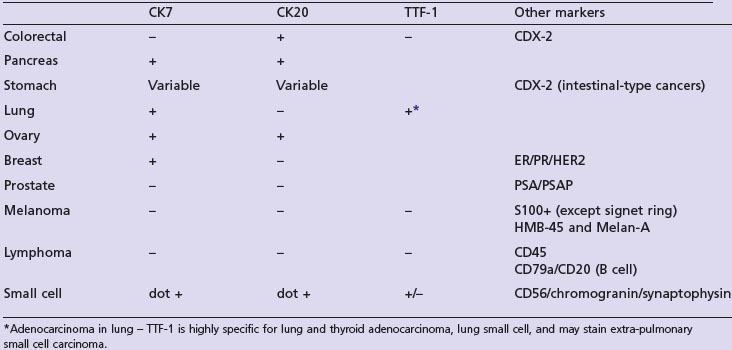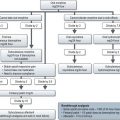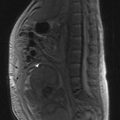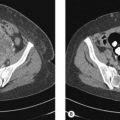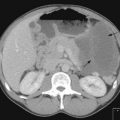18 Cancers of unknown primary
Evaluation
Clinicopathological evaluation aims to identify a primary site, a clinicopathological subset and to rule out non-epithelial tumours. The first step includes clinical history to establish risk factors, clinical examination, investigations and pathological evaluation. Initial investigations include blood tests, urinalysis, faecal occult blood test and CT scan of the chest, abdomen and thorax. Endoscopic evaluation is guided by symptoms and/or signs. In patients suspected to have extragonadal germ cell tumours a serum beta-hCG and AFP should be estimated. Other tumour markers depending on the clinical context include PSA, CEA, CA-125 and CA19-9. Pathological evaluation includes light microscopy and expedient use of immunohistochemical techniques. Immunohistochemistry is useful in differentiating epithelial from non-epithelial tumours, such as sarcoma and lymphoma (Table 18.1). The majority of epithelial tumours are adenocarcinoma (65–80%) followed by squamous cell carcinoma (10–15%) and undifferentiated carcinoma (5–10%).
The outcome of first step evaluation is identification of a specific clinicopathological entity which may be a favourable (15% patients) or unfavourable (85% patients) (Box 18.1).

